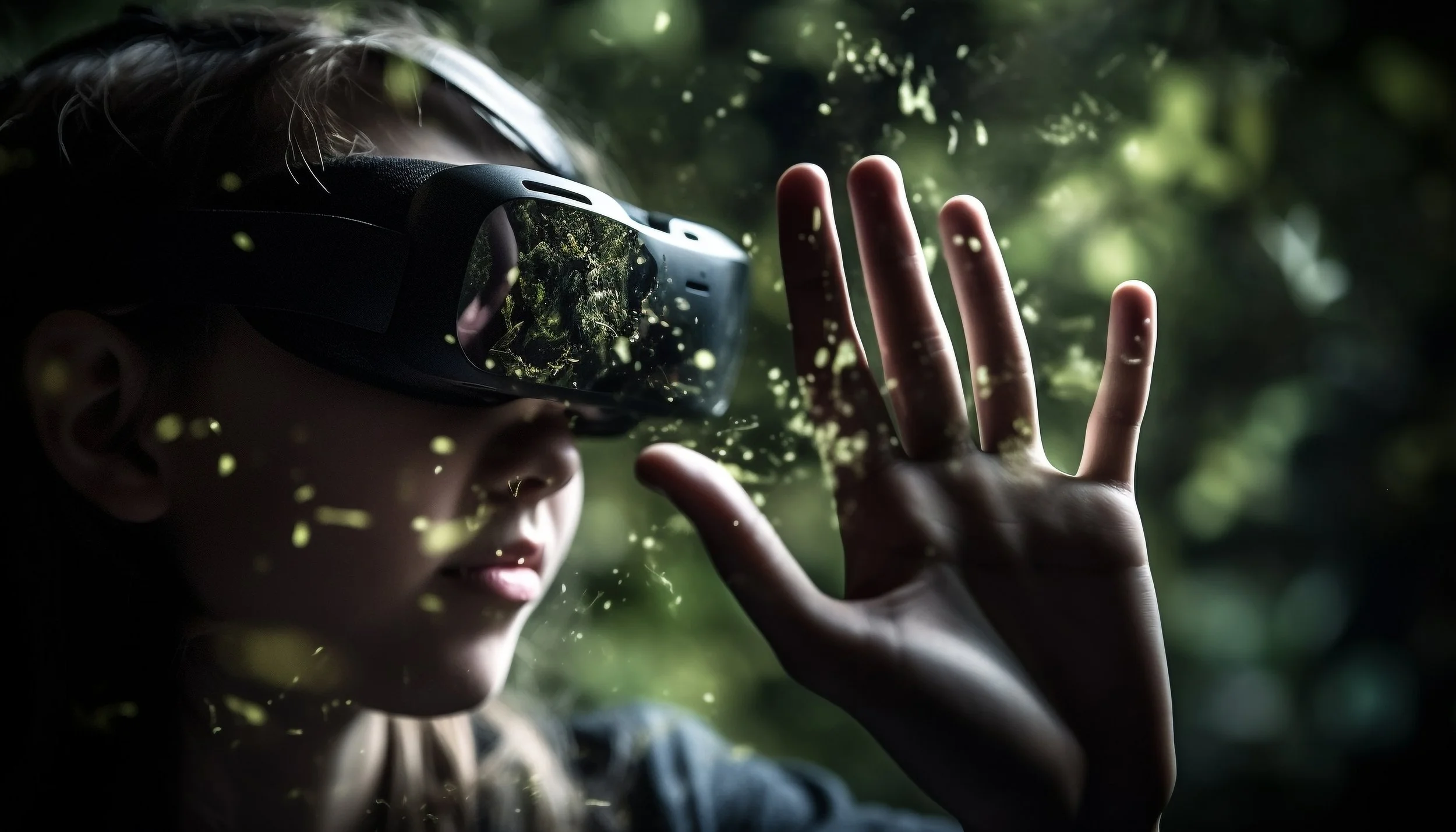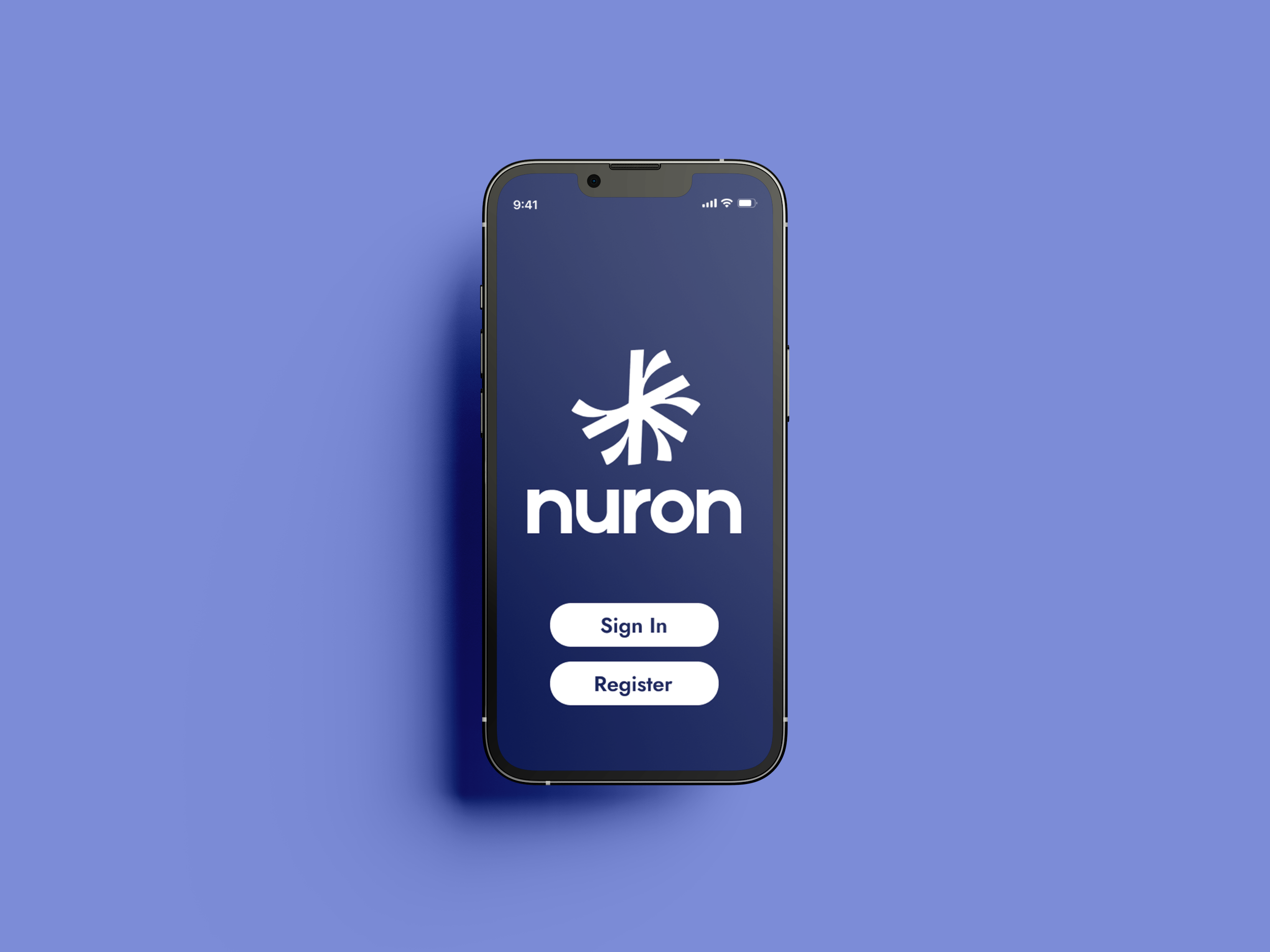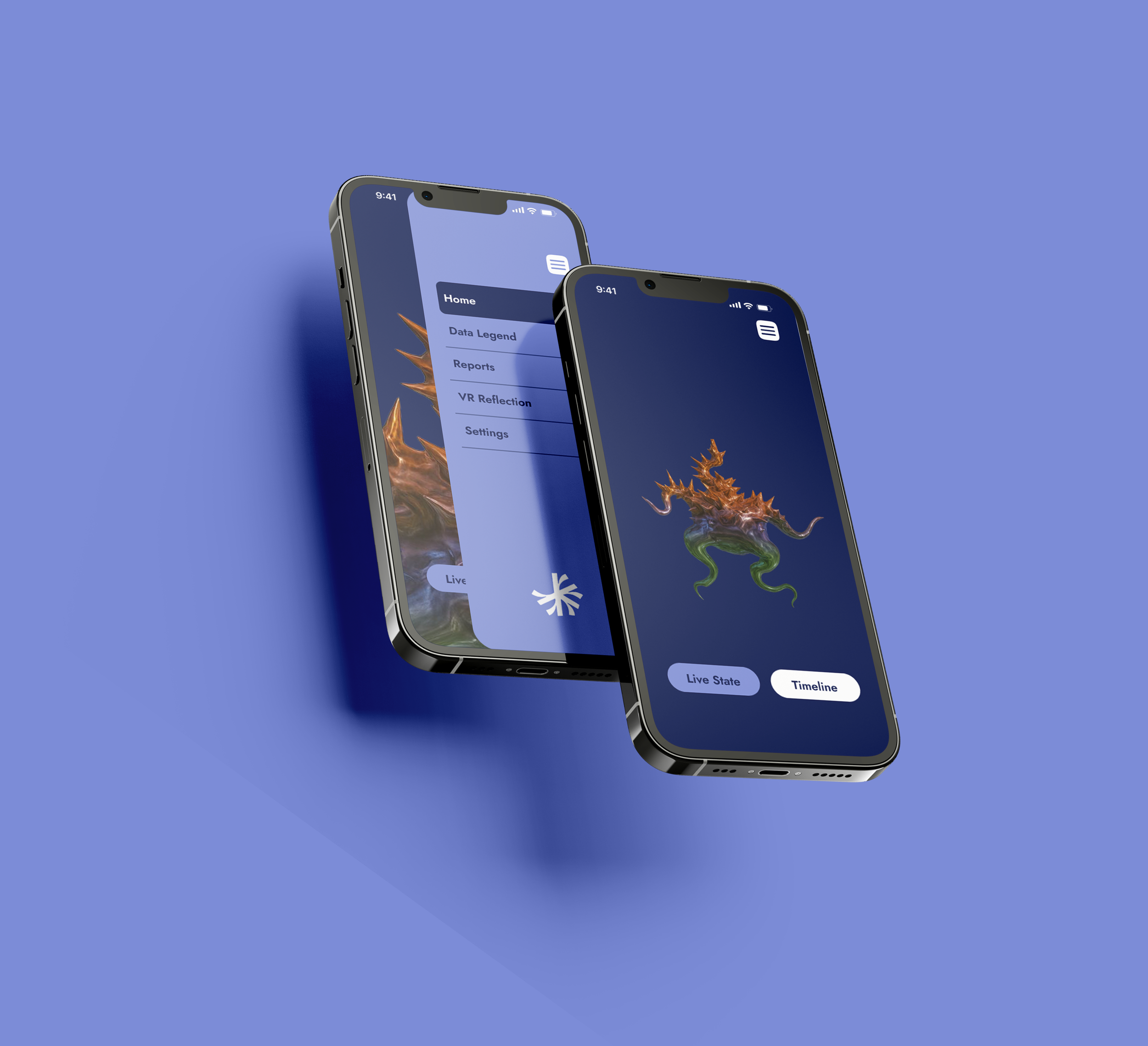Soft Facination
Attention Restoration Theory suggests that mental fatigue can be improved by time spent around nature due to an effect called "soft fascination"
EMDR Therapy is a mental health treatment technique which involves moving your eyes a specific way while you process traumatic memories.
EDMR Therapy
A study immersed individuals in 3 environments: neutral all dark, natural VR forest & non-natural office. The results showed that individuals were more creative, while immersed in the natural forest environment.
Case Study
Data informed mirror of mental health, product which acts in two parts to support users mental health. The application acts as a data reflection by displaying users behaviours and feelings, partnered with a AR experience to aid in introspection.
The Product - Nuron
Guide to help navigate growth
-
Guide to help navigate growth -
This product works by collecting real-time readings from the wearable device using its built-in sensors, including a heart rate monitor, sentiment analysis through the microphone, RFID, oximetry sensor, skin temperature sensor, and GPS. These sensors continuously track the user’s physiological and behavioral data, which is then transferred to the connected mobile application. Within the app, the data is processed and visualized, giving users insights into their behaviors, emotions, and physical states.
As shown in the diagram, behavior generates data such as heart rate, location, and sentiment analysis, which feed into the system. The application then interprets these readings to reflect the user’s needs and activities, while the augmented reality (AR) component transforms the data into therapy sessions by providing personalized prompts and visuals. In this way, the system supports mental health by combining data-driven reflection with immersive AR experiences for deeper introspection and self-awareness.
How does it work?
The user wears the device, which collects data through sensors such as heart rate, GPS, skin temperature, oximetry, microphone, and sentiment analysis. This data is sent to the app, where it is processed and reflected back to the user as insights about their behaviors and emotional state. Based on these readings, the app activates an Augmented Reality session, offering personalized prompts and visuals that guide the user through an introspective and therapeutic experience.
User Journeys
Nuron Application
The application displays user generated data, offering the opportunity to interpret and better understand this mirror of their actions, behaviours and feelings, through the readings gathered from the wearable to the user‘s personalized therapy session.
Guide to help navigate growth
-
Guide to help navigate growth -
In this page the user can see an overview of their Nuron Cell either in its live state or timeline. The user can also access the hamburger menu which contains , the Data Legend , settings , reports, and AR reflection pages.
Main Page - The Cell
Nodes
The nodes serve as key points of data visualization, each representing an aspect of the user’s behavior and environment. They are interconnected by the information gathered from sensors, such as heart rate, location, and sentiment analysis. For example, nodes can change depending on the locations the user visits, showing how behavior shifts in different environments. This network of nodes builds a visual map of the user’s experiences, making it easier to see connections between physical presence, emotional states, and overall mental well-being.
The texture reflects the user’s heart rate and transforms physiological data into a tangible visual form. When the heart rate is elevated, the texture becomes rough, spiky, or jagged, indicating stress, excitement, or agitation. Conversely, when the heart rate is steady and moderate, the texture appears smooth, soft, and balanced, symbolizing calmness or a healthy emotional state. This use of texture allows the user to intuitively understand their physical condition without relying only on numbers, making the data more emotionally resonant.
Textures
Color represents the user’s mood and sentiment, mapped onto a spectrum for emotional awareness. A red hue indicates negative emotions or a bad mood, while green suggests positivity and a good mood. Other shades like yellow, orange, or blue illustrate the subtleties in between, creating a visual spectrum of feelings rather than a binary good-or-bad state. By translating moods into colors, the system provides an immediate and accessible way for users to recognize their emotional patterns and reflect on their mental well-being.
Colors
A timeline view is available for the user to see their progress in a chosen interval of time.
Timeline
Data Legend
The data legend is a key element in visual communication that explains the meaning of symbols, colors, or patterns of the Nuron cell chart. It serves as a guide to help viewers quickly interpret the information being presented, ensuring clarity and reducing confusion. For example, in a visualization of mood states, a legend might assign specific colors—such as orange for anxiety, green for peacefulness, and red for low mood—so that the abstract or visual elements can be easily understood. By providing this context, the legend bridges the gap between raw visuals and meaningful insights, allowing users to accurately connect the representation to the data it conveys.
AR Therapy Session
In the comfort of their own space, users are guided by an Al through personalized prompts to help reflect on habits, thoughts and feelings.
A guide to help navigate growth.
An AR therapy session immerses you in a familiar yet expanded version of your own environment, creating a safe and imaginative space for reflection. For instance, if you are sitting in your room looking out the window, the view might seamlessly transform into a lush garden, a calming seaside, or a sky filled with floating elements that invite curiosity and playfulness. Guided by a narrator, prompts appear throughout the experience, encouraging self-reflection and interaction in a way that feels engaging and supportive. This approach is especially helpful for people who feel anxious or uncomfortable visiting a therapist in person, as it provides the therapeutic benefits of guided reflection without the pressure of face-to-face interaction. By blending comfort, creativity, and guidance, AR therapy offers a fun and accessible path toward self-awareness and emotional growth..














